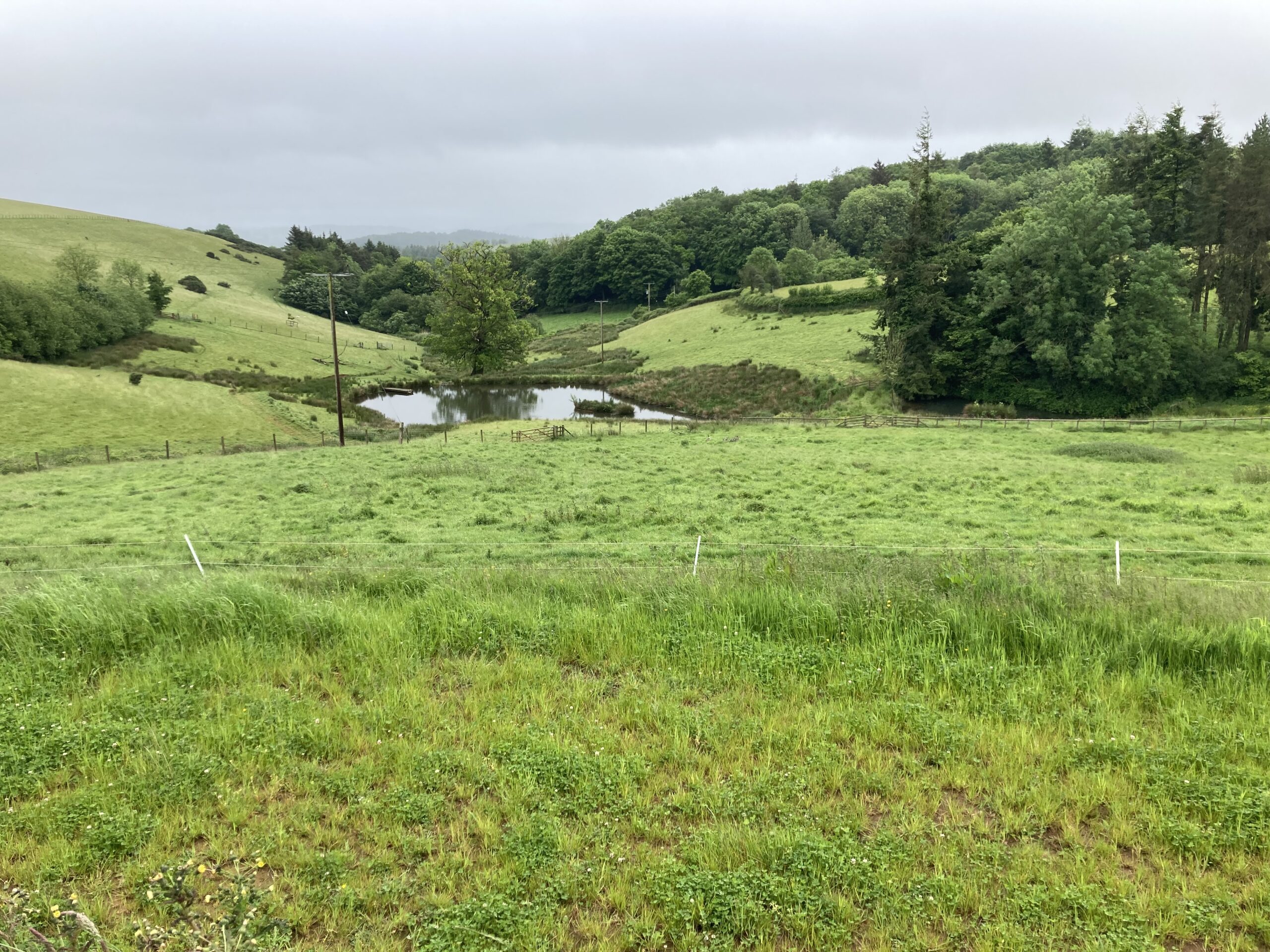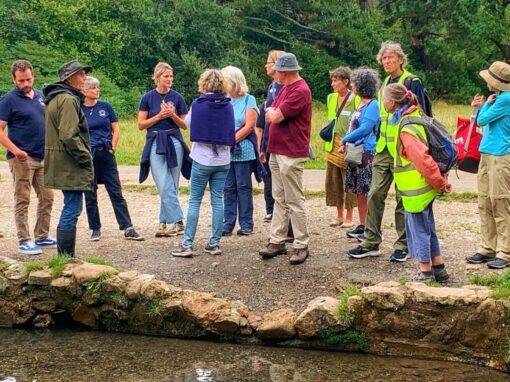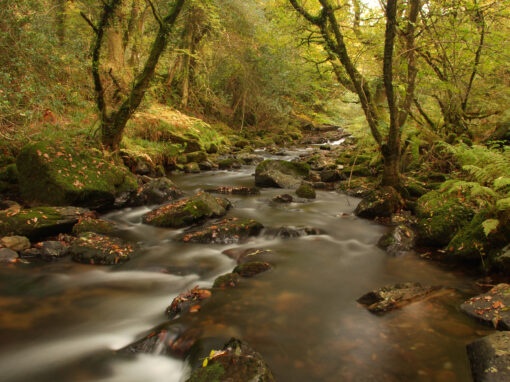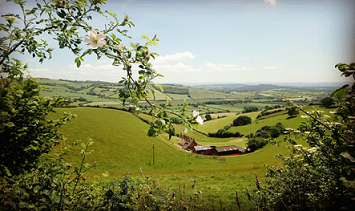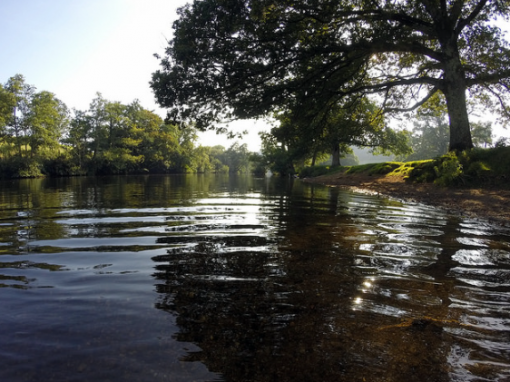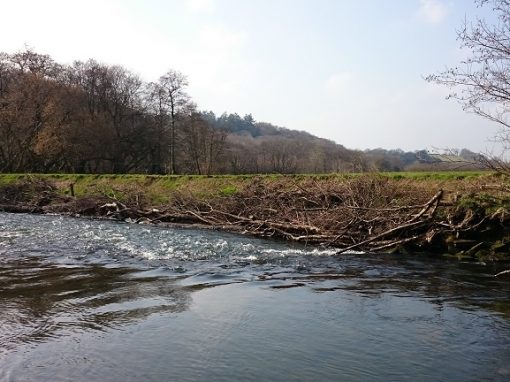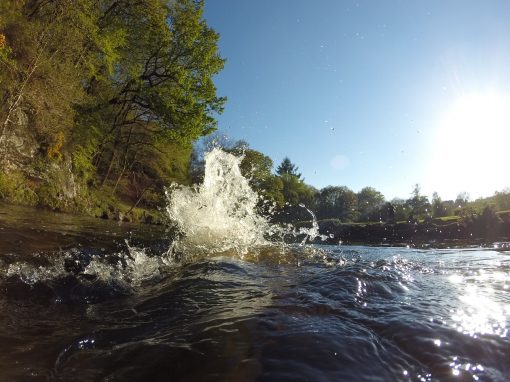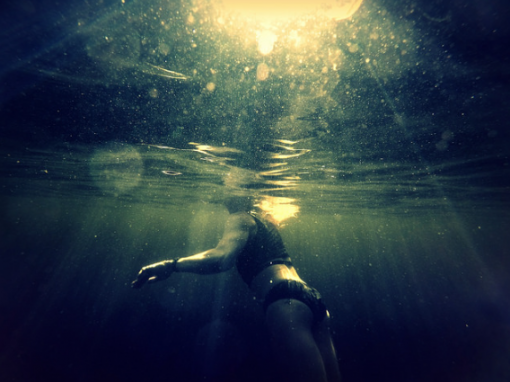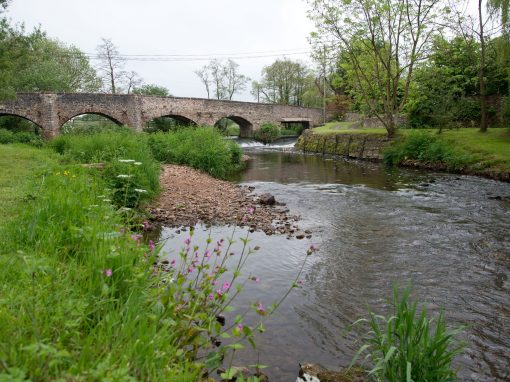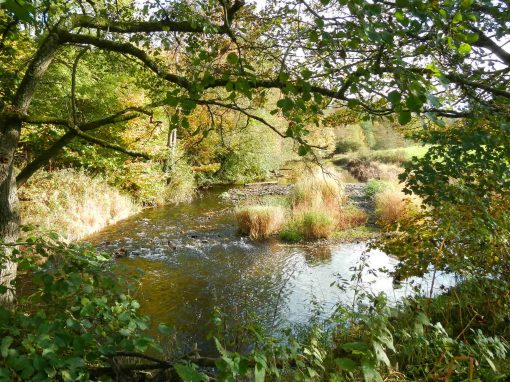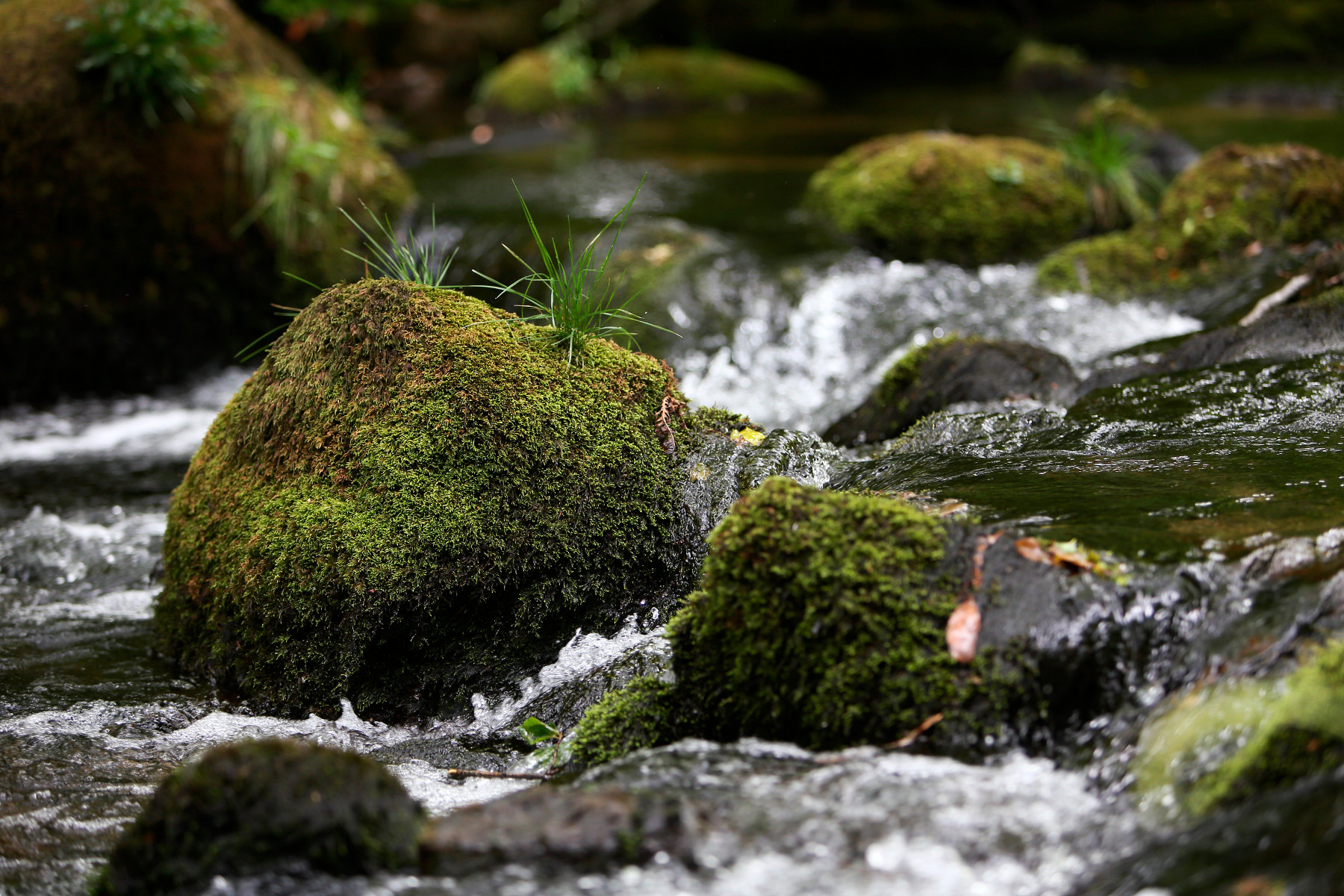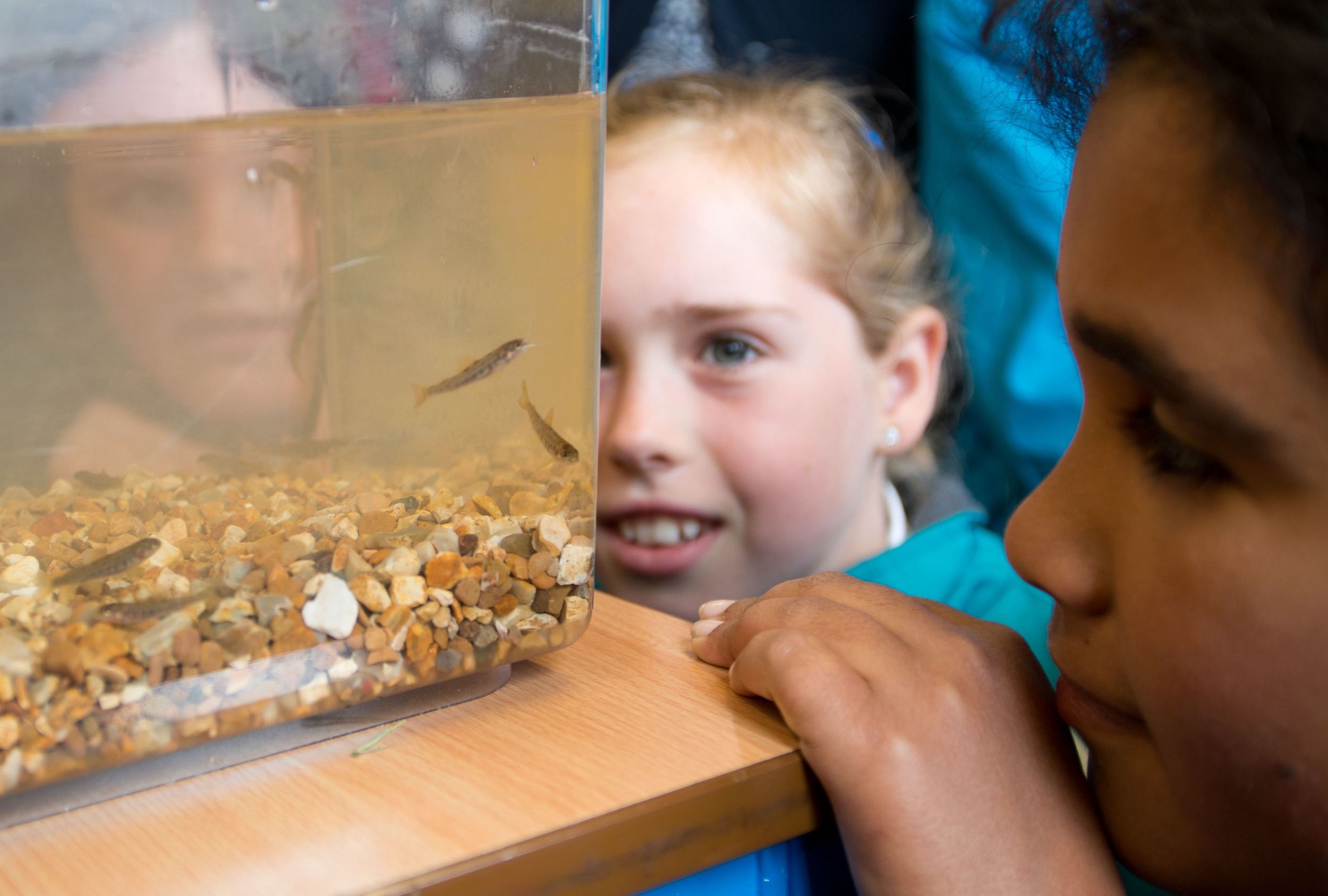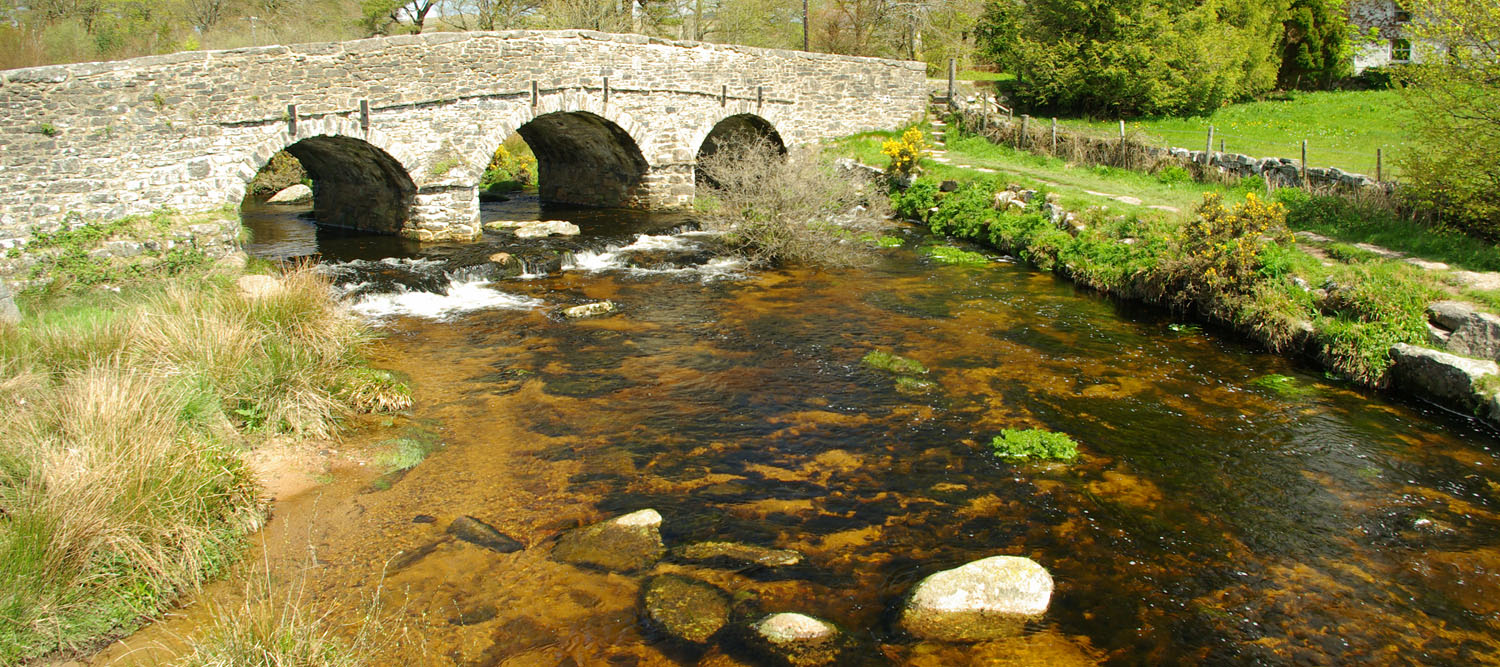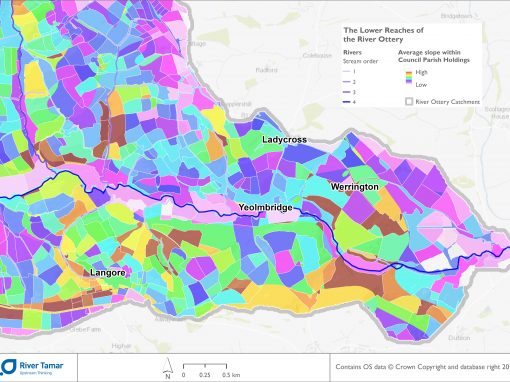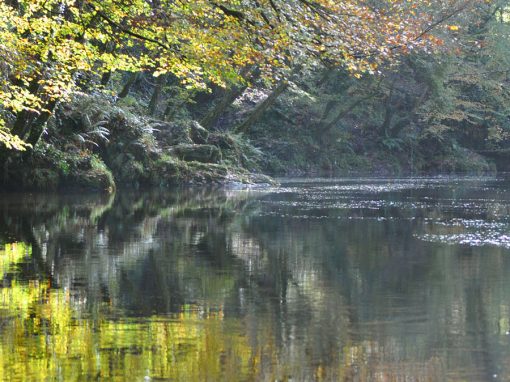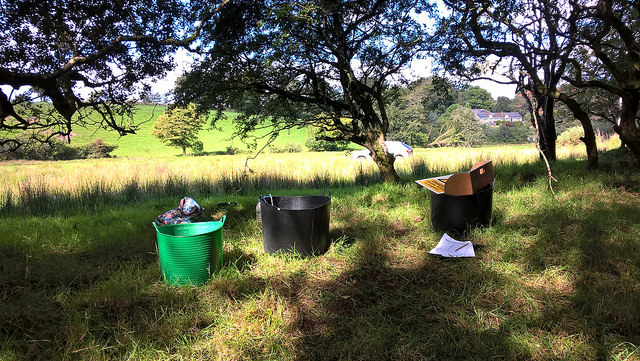–
This summer we’ve been following the adventures of Arthur Fuest as he made his way along the River Exe. Head to the ‘River Stories’ section to catch up on the beginnings of Arthur’s journey!
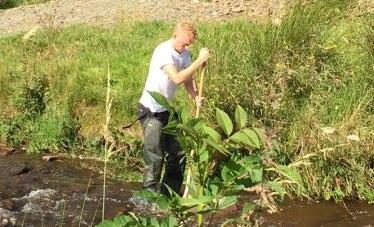
Arthur Fuest
One of the most satisfying aspects of walking the length of the river was being able to take data as part of the Westcountry Rivers Trust’s Citizen Science Investigation (CSI) programme. I took measurements for turbidity, total dissolved solids and phosphates. As well as being indicators of water quality, the data allowed me to understand another dimension in the story of the river. Stopping to take measurements provided me with an excuse to sit and just watch the river.
Sitting on the banks of the river just north of Exeter, I contemplated how the river had changed since I had first met it at its source. The mature meanders that cut through the flat bottom of the valley gave off a languid air, heavy with transported sediments. I had walked just over fifty miles and in that time the environment and climate had changed radically. This was big farming land feeding off the fertile flood plains of the Exe
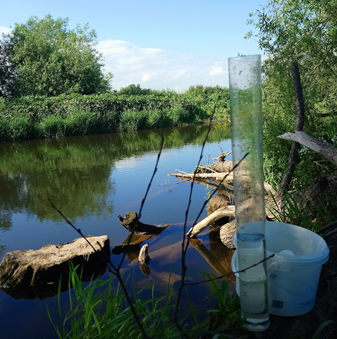
CSI on the banks of the River Exe
I reached Exeter late in the evening and called a great aunt who kindly offered me a bed for the night. Exeter, the regional capital, has a very close connection to the river and, up until recently, shipping would sail up the Exeter Ship canal, bypassing the shallow estuary. I ate my breakfast courtesy of the Boatyard Bakery and watched life on the quays. These days the traffic comes in the form of kayaks and stand up paddle boards and the hoots of children enjoying the river are clear over the background noise of the city.
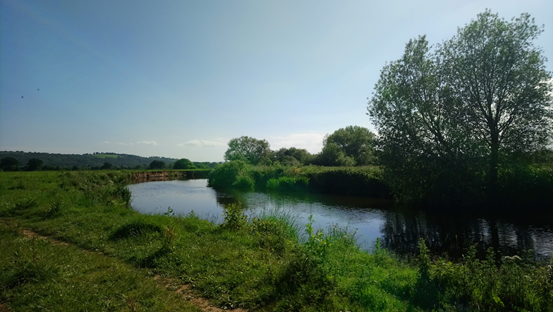
The Exe three miles north of Exeter
Between the Exe and its canal runs a footpath that takes you just above the reed beds and offers a spectacular view of the mudflats and the birds that live there. The estuary is a site of scientific interest and home to a great abundance of life. Walking along the footpath, I kept my eyes peeled for signs of lapwings and redshanks, one of the only nesting grounds left in the UK. From Exeter it is possible to walk the last twelve miles to the sea with the estuary stretching out just to the left of the path.
The Turf sits at the end of the canal and was a great pub to celebrate (if prematurely) the end of my walk. Whilst eating a crab sandwich and drinking a local organic beer, I could admire the shipwrecks that reveal their ribs poking out of the mud at low tide.
My family were meeting me at Exmouth so all I had to do now was walk the final three miles to Starcross and catch the family-run ferry that would take me across the mouth of the river. Finally ice cream and a swim in the sea meant the end of a long walk. Source to the sea of the Exe was a brilliant adventure and has definitely wetted my appetite for more river walks.
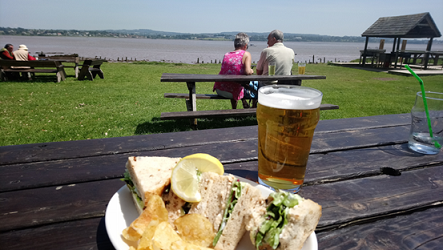
Enjoying a beer in the middle of the estuary
Find out more about the work of Westcountry Rivers Trust...
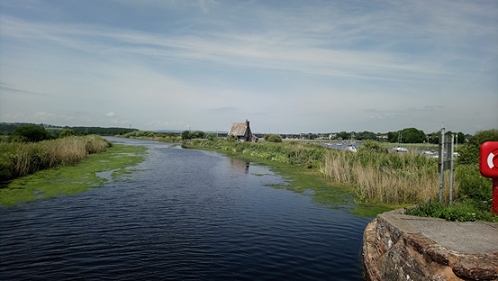
The Exeter ship canal with the Exe’s estuary to the right
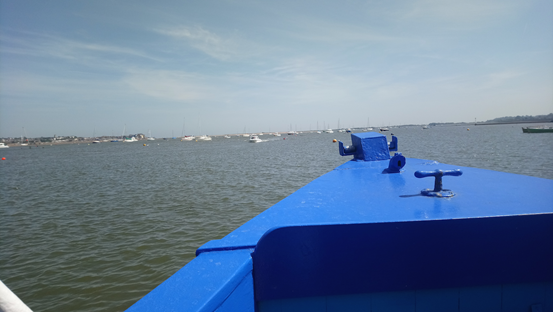
The ferry to Exmouth
Other Westcountry River Stories
